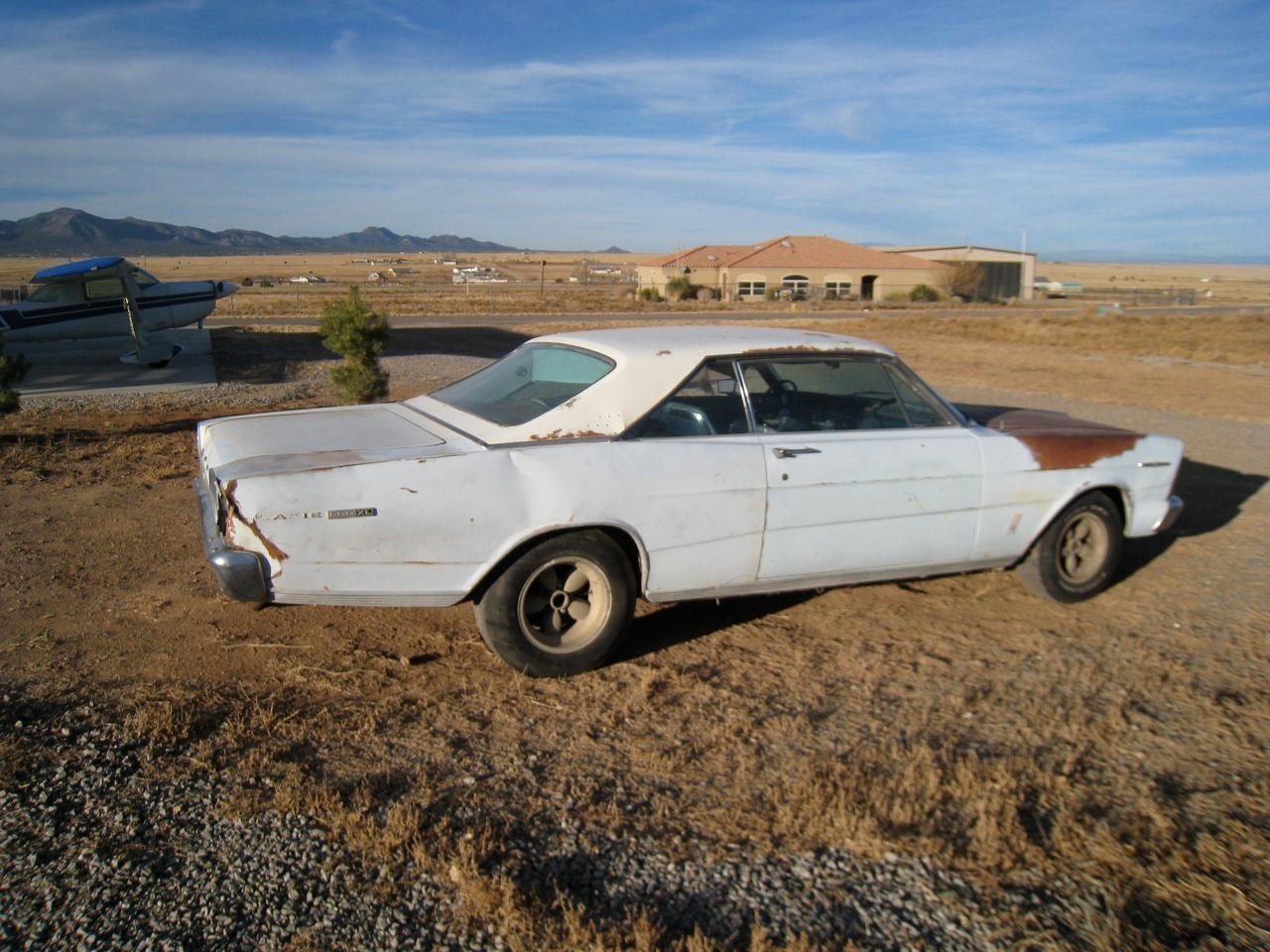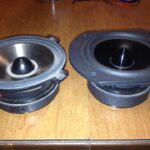Like many classic car enthusiasts, the dream began with a vision – a beautiful 1966 Ford Galaxie 500 7 Litre. The wife fell in love at a car show, and the search began. However, finding a pristine 7 Litre, or even an XL model, proved incredibly difficult. Eventually, passion overruled better judgment, and we ended up with… well, let’s just say a significant project. What we acquired was less a car and more a prime candidate for becoming a 1966 Ford Galaxie Parts Car project in itself.
This “fine specimen,” as you can see, had clearly been waiting patiently for its next incarnation – hopefully not as another major appliance. Years of sitting had taken their toll, and it was immediately obvious this wasn’t a weekend fixer-upper. A full-scale, ground-up rebuild was the only path forward.
The Cold, Hard Assessment of a Project Car
Now, to be fair, this 1966 Ford Galaxie XL wasn’t beyond salvation, but it was undeniably rough. Originating from Texas, it benefited from a relatively rust-free existence, at least superficially. However, its history involved a significant rear-end collision that rippled damage all the way to the front. The body was twisted from bumper to door, and both the front and rear frame sections were bent. Evidence suggested a previous, and rather unsuccessful, attempt to pull out some of the damage.
The allure of owning a classic car is strong, but some projects, like this one initially seemed, are so daunting they should probably be avoided unless you possess unlimited time, resources, and perhaps a touch of madness. And this was just the visible damage.
The images reveal the car exactly as purchased. The engine was incomplete, and yes, that is fire damage in the last picture. Surprisingly, the fire wasn’t engine-related but originated from the transmission – a rare “internally combusting C6” Ford option, who knew? To compound matters, the fire department’s well-intentioned dousing resulted in approximately two gallons of water finding their way into the engine.
The seller, with remarkable audacity, claimed to have started the engine by pouring gas down the carburetor – conveniently omitting the detail about the two gallons of water in the oil pan. For those unfamiliar, water is not an ideal engine lubricant. This same individual then attempted to renegotiate the price upwards as we were loading the Galaxie onto the trailer. Let’s just say the ensuing conversation was… memorable.
The inventory of problems was extensive: bent frame, twisted body, crushed rear quarter panel, heavily dented deck lid, and an engine hood warped from engine fire heat. Both the engine and transmission required complete rebuilds. The interior was utterly destroyed by fire and needed total replacement. Every system – brakes, steering, radio, wipers, HVAC, gauges – demanded a comprehensive overhaul.
The Strategic Use of 1966 Ford Galaxie Parts Cars
Faced with such a monumental task, and fortunate enough to have access to a couple of other 1966 and 1968 Ford Galaxie parts cars, a strategic plan emerged. Repairing the existing frame and body was deemed impractical. Instead, the decision was made to source a donor body shell and frame from the parts cars. The original Galaxie XL would essentially become the central project, drawing heavily on the resources of these 1966 Ford Galaxie parts cars. Interior components would be salvaged and refurbished to create a new interior. In total, components from four different “clapped out” Galaxies would contribute to resurrecting this one. The transmission, thankfully, had already been rebuilt. Engine-wise, the plan leans towards utilizing a partially completed 352, although the allure of restoring the original date-coded 390 remains a tempting option.
Work began on the interior, accumulating the necessary parts from the donor cars. Over the past couple of years, progress has been made in fits and starts. The next phase involves detailing the frame build-up and the ongoing interior rehabilitation.
The End Goal: A Reliable Classic, Built from Parts
Having a clear vision is crucial for any restoration project. The objective for this 1966 Ford Galaxie XL is to create a dependable daily driver, not a concours-level showpiece. The focus is on reliability and usability, embracing sensible upgrades while preserving the classic 1960s essence. The aim is a car robust enough for daily driving in most weather (excluding snow), presentable enough for car shows without demanding perfection, and easily maintainable.
Key upgrades planned include:
- Four-wheel disc brakes for enhanced stopping power.
- Fuel injection to replace the problematic carburetor, especially beneficial at higher altitudes and with modern fuel quality.
- Alloy wheels, chosen to the wife’s taste, ditching hubcaps for a more modern touch.
- Modern anti-theft system, including built-in cameras and radio location hardware for security.
- A restored original AM-FM radio with a multiplex adapter for stereo and an auxiliary input for MP3 players, blending classic looks with modern functionality.
- HVAC system conversion to R134a for improved and more environmentally friendly air conditioning.
- Power trunk lid release for convenience.
- Factory-style power windows for ease of use.
- Electric power door locks, replacing the less reliable factory vacuum system.
- Remote entry using a Ford key fob for modern convenience.
- Rear window defroster for improved visibility in colder climates.
Longer-term upgrades under consideration are an overdrive transmission for better highway cruising and intermittent wipers for increased driving comfort.
This project, born from a dream and realized through the strategic use of 1966 Ford Galaxie parts cars, is an exciting journey. Stay tuned as we delve deeper into each stage of this restoration, transforming a pile of parts into a road-worthy classic. As they say, “I’ll be back” with more updates on this Galaxie resurrection.

